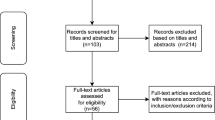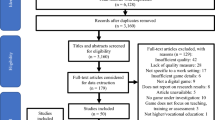Abstract
Emerging pervasive games use sensors, graphics and networking technologies to provide immersive game experiences integrated with the real world. Existing pervasive games commonly rely on a device screen for providing game-related information, while overlooking opportunities to include new types of contextual interactions like jumping, a punching gesture, or even voice to be used as game inputs. We present the design of Spellbound, a physical mobile team-based game, to help contribute to our understanding of how we can design pervasive games that aim to nurture a spirit of togetherness. We also briefly touch upon how togetherness and playfulness can transform physical movement into a desirable activity in the user evaluation section. Spellbound is an outdoor pervasive team-based physical game. It takes advantage of the above-mentioned opportunities and integrates real-world actions like jumping and spinning with a virtual world. It also replaces touch-based input with voice interaction and provides glanceable and haptic feedback using custom hardware in the true spirit of social play characteristic of traditional children’s games. We believe Spellbound is a form of digital outdoor gaming that anchors enjoyment on physical action, social interaction, and tangible feedback. Spellbound was well received in user evaluation playtests which confirmed that the main design objective of enhancing a sense of togetherness was largely met.









Similar content being viewed by others
References
Ballagas RA, Kratz SG, Borchers J, Yu E, Walz SP, Fuhr CO, Hovestadt L, Tann M (2007) REXplorer: a mobile, pervasive spell-casting game for tourists. In: CHI’07 extended abstracts on Human factors in computing systems, ACM, pp 1929–1934
Bekker T, Sturm J, Eggen B (2010) Designing playful interactions for social interaction and physical play. Pers Ubiquitous Comput 14(5):385–396
Bell M, Chalmers M, Barkhuus L, Hall M, Sherwood S, Tennent P, Brown B, Rowland D, Benford S, Capra M, Hampshire A (2006) Interweaving mobile games with everyday life. In: CHI ’06, CHI ’06, ACM, pp 417–426
Benford S, Crabtree A, Flintham M, Drozd A, Anastasi R, Paxton M, Tandavanitj N, Adams M, Row-Farr J (2006) Can you see me now? ACM Trans Comput Hum Interact 13(1):100–133
Benford S, Greenhalgh C, Giannachi G, Walker B, Marshall J, Rodden T (2012) Uncomfortable interactions. In: Proceedings of CHI ’12, CHI ’12, ACM, pp 2005–2014
Bianchi-Berthouze N, Kim W, Patel D (2007) Body movement engage you more in digital game play? and why?. In: ACII ’07, pp 102–113
Brain M (2000) How laughter works. HowStuffWorks. com. http://people.howstuffworks.com/laughter7.htm. Accessed 1 Oct 2006
Brewster S, Brown LM (2004) Tactons: structured tactile messages for non-visual information display. In: Proceedings of the fifth conference on Australasian user interface-volume 28, AUIC ’04, Australian Computer Society, Inc., pp 15–23
Capra M, Radenkovic M, Benford S, Oppermann L, Drozd A, Flintham M (2005) The multimedia challenges raised by pervasive games. In: Proceedings of the 13th annual ACM international conference on multimedia, ACM, pp 89–95
Chatzigiannakis I, Mylonas G, Akribopoulos O, Logaras M, Kokkinos P, Spirakis P (2010) The “hot potato” case: challenges in multiplayer pervasive games based on ad hoc mobile sensor networks and the experimental evaluation of a prototype game. arXiv preprint arXiv:1002.1099
Cheok AD, Goh KH, Liu W, Farbiz F, Fong SW, Teo SL, Li Y, Yang X (2004) Human Pacman: a mobile, wide-area entertainment system based on physical, social, and ubiquitous computing. Pers Ubiquitous Comput 8(2):71–81
Crabtree A, Benford S, Rodden T, Greenhalgh C, Flintham M, Anastasi R, Drozd A, Adams M, Row-Farr J, Tandavanitj N et al. (2004) Orchestrating a mixed reality game‘on the ground’. In: Proceedings of the SIGCHI conference on Human factors in computing systems, ACM, pp 391–398
Dourish P (2001) Where the action is: the foundations of embodied interaction. MIT Press, cambridge
Eichberg H et al (2010) Bodily democracy: towards a philosophy of sport for all. Taylor & Francis, Routledge
Eriksson E, Hansen TR, Lykke-Olesen A (2007) Movement-based interaction in camera spaces: a conceptual framework. Pers Ubiquitous Comput 11(8):621–632
Garner J, Wood G, Pijnappel S, Murer M, Mueller F (2013) Combining moving bodies with digital elements: design space between players and screens. In: IE ’13, ACM, 17:1–17:10
Gerling K, Livingston I, Nacke L, Mandryk R (2012) Full-body motion-based game interaction for older adults. In: CHI ’12, ACM Press, pp 1873–1882
Graves L, Stratton G, Ridgers ND, Cable NT (2008) Energy expenditure in adolescents playing new generation computer games. Br J Sports Med 42(7):592–594
Gunther EEL (2001) Skinscape: a tool for composition in the tactile modality. PhD thesis, Massachusetts Institute of Technology
Hampton KN, Sessions LF, Her EJ, Rainie L (2009) Social isolation and new technology. Pew Internet Am Life Proj 4:5–22
Herbst I, Braun A-K, McCall R, Broll W (2008) TimeWarp: interactive time travel with a mobile mixed reality game. In: Proceedings of the 10th international conference on human computer interaction with mobile devices and services, ACM, pp 235–244
Isbister K (2011) Emotion and motion: games as inspiration for shaping the future of interface. Interactions 18(5):24–27
Isbister K, Schwekendiek U, Frye J (2011) Wriggle: an exploration of emotional and social effects of movement. In: Extended Abstracts CHI ’11, ACM Press, pp 1885–1890
Jantke KP, Arnold O, Spundflasch S (2013) Aliens on the bus: a family of pervasive games. In: Consumer electronics (GCCE), 2013 IEEE 2nd global conference on, IEEE, pp 387–391
Kasapakis V, Gavalas D (2014) Blending history and fiction in a pervasive game prototype. In: Proceedings of the 13th international conference on mobile and ubiquitous multimedia, MUM ’14, ACM
Koster R (2004) A theory of fun for game design. Paraglyph Press, Scottsdale
Kurczak J, Graham TCN, Joly C, Mandryk RL (2011) Hearing is believing: evaluating ambient audio for location-based games. In: ACE ’11, ACM, 32:1–32:8
Labs N (2013) Ingress, https://www.ingress.com/
Lindley SE, Le Couteur J, Berthouze NL (2008) Stirring up experience through movement in game play: effects on engagement and social behaviour. In: Proceedings of the SIGCHI conference on human factors in computing systems, ACM, pp 511–514
Lindt I, Ohlenburg J, Pankoke-Babatz U, Ghellal S (2007) A report on the crossmedia game epidemic menace. Comput Entertain (CIE) 5(1):8
Lundgren S, Fischer JE, Reeves S, Torgersson O (2015) Designing mobile experiences for collocated interaction. In: Proceedings of CSCW?15
Lyons EJ, Tate DF, Ward DS, Bowling JM, Ribisl KM, Kalyararaman S (2011) Energy expenditure and enjoyment during video game play: differences by game type. Med Sci Sports Exerc 43:1987–1993
Magerkurth C, Cheok AD, Mandryk RL, Nilsen T (2005) Pervasive games: bringing computer entertainment back to the real world. Comput Entertain 3(3):4
Malone TW (1981) Toward a theory of intrinsically motivating instruction. Cogn Sci 5(4):333–369
McGonigal J (2011) Reality is broken: why games make us better and how they can change the world. Penguin group, London
Misund G, Holone H, Karlsen J, Tolsby H (2009) Chase and catch - simple as that?: old-fashioned fun of traditional playground games revitalized with location-aware mobile phones. In: ACE ’09, ACM, pp 73–80
Moran S, Pantidi N, Bachour K, Fischer JE, Flintham M, Rodden T, Evans S, Johnson S (2013) Team reactions to voiced agent instructions in a pervasive game. In: Proceedings of the 2013 international conference on intelligent user interfaces, ACM, pp 371–382
Mueller F, Edge D, Vetere F, Gibbs MR, Agamanolis S, Bongers B, Sheridan JG (2011) Designing sports: a framework for exertion games. In: Proceedings of CHI ’11, ACM Press, pp 2651–2660
Mueller F, Gibbs MR, Vetere F (2009) Design influence on social play in distributed exertion games. In: Proceedings of the SIGCHI conference on human factors in computing systems, ACM, pp 1539–1548
Mueller F, Isbister K (2014) Movement-based game guidelines. In: CHI ’14, ACM Press
Salem K, Zimmerman E (2004) Rules of play. MIT Press, Cambridge
Stine E (2011) Location-based games: from screen to street. PhD thesis, The Danish School of Education, Aarhus University, Center for Playware
Strömberg H, Väätänen A, Räty V-P (2002) A group game played in interactive virtual space: design and evaluation. In: Proceedings of the 4th conference on Designing interactive systems: processes, practices, methods, and techniques, ACM, pp 56–63
Sutton-Smith B (2009) The ambiguity of play. Harvard University Press, Cambridge
Tan HZ, Pentland A (2005) Tactual displays for sensory substitution and wearable computers. In: ACM SIGGRAPH 2005 Courses, ACM, p 105
Thomas B, Close B, Donoghue J, Squires J, Bondi PD, Piekarski W (2002) First person indoor/outdoor augmented reality application: Arquake. Pers Ubiquitous Comput 6(1):75–86
Six to Start (2013) Zombies, run!. https://www.zombiesrungame.com/
Van Erp JB (2002) Guidelines for the use of vibro-tactile displays in human computer interaction. In: Proceedings of eurohaptics vol 2002, pp 18–22
Wakkary R, Hatala M, Jiang Y, Droumeva M, Hosseini M (2008) Making sense of group interaction in an ambient intelligent environment for physical play. In: Proceedings of the 2nd international conference on Tangible and embedded interaction, ACM, pp 179–186
Weiser M (1991) The computer for the 21st century. Sci Am 265(3):94–104
Acknowledgments
We would like to thank Skyler Adams for help with the hardware, all the players for their feedback, as well as Leo Burd and Josh Sheldon at the MIT Center for Mobile Learning for lending us six Android smartphones without which playtesting and evaluating Spellbound would not have been possible.
Author information
Authors and Affiliations
Corresponding author
Rights and permissions
About this article
Cite this article
Sra, M., Schmandt, C. Expanding social mobile games beyond the device screen. Pers Ubiquit Comput 19, 495–508 (2015). https://doi.org/10.1007/s00779-015-0845-0
Received:
Accepted:
Published:
Issue Date:
DOI: https://doi.org/10.1007/s00779-015-0845-0




